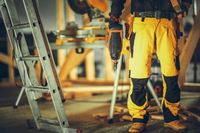Understanding Occupational Safety Apparel

Workers in many industries face hazards like extreme temperatures, chemicals, and falling objects. Occupational safety apparel reduces these risks, providing protection and meeting regulatory standards. This article covers its key components, standards, advancements and maintenance to help employers and workers choose the right gear for a safer workplace.
What is Occupational Safety Apparel, and Why is it Important?
Occupational safety apparel is specialized clothing and equipment designed to protect workers from any conceivable workplace hazard. These garments serve as a critical barrier against physical, chemical and environmental risks encountered in various industries.
Many workplaces present dangers such as extreme temperatures, sharp objects, hazardous chemicals and airborne particles. Without appropriate protective clothing, employees are more vulnerable to injuries and long-term health complications. Thus, employers must comply with safety regulations by equipping workers with protective gear that meets industry standards.
Key Components of Occupational Safety Apparel
Different professions require distinct types of protective clothing tailored to specific workplace hazards. High-visibility vests and jackets enhance visibility in environments with moving machinery or low lighting. Here, flame-resistant clothing is essential in industries where exposure to high temperatures or any electrical hazard is common.
Gloves, helmets and eye protection safeguard workers from falling objects, flying debris and exposure to harmful substances. For example, industrial work trousers from Strauss, provide durability and flexibility for workers operating in demanding environments. Footwear with slip-resistant soles and reinforced toe caps minimizes the risk of foot injuries in hazardous environments. It is important to note, however, that the selection of appropriate gear depends on the nature of the work being performed.
The Role of Safety Standards and Regulations
Regulatory bodies establish guidelines to maintain workplace safety and protect workers from occupational hazards. Organizations such as the Occupational Safety and Health Administration (OSHA) and the European Agency for Safety and Health at Work (EU-OSHA) develop and enforce standards for protective clothing.
Compliance with these regulations reduces workplace injuries and legal liabilities for employers. Meanwhile, materials and designs used in protective apparel must meet rigorous testing requirements to provide adequate resistance against external threats. Therefore, employers should regularly review updated safety standards to remain in compliance with legal obligations.
Advancements in Protective Clothing Technology
Innovations in fabric technology have led to the development of more effective and comfortable protective clothing. Modern safety apparel incorporates lightweight yet durable materials that improve mobility while maintaining high levels of protection. Meanwhile, breathable fabrics help regulate body temperature in demanding work environments.
One step further, smart textiles equipped with sensors can monitor workers’ health conditions and detect exposure to hazardous substances. Here, ergonomic designs enhance worker comfort, reducing fatigue and improving overall productivity. In this context, continuous advancements contribute to the development of more efficient and adaptable protective gear across multiple industries.
What Are the Recommended Safety Work Trousers for Construction Workers?
Construction workers require durable and functional work trousers that provide adequate protection against workplace risks. Industrial trousers designed for construction settings often feature reinforced knee pads, multiple pockets for tool storage and abrasion-resistant fabrics. Moreover, heavy-duty materials such as ripstop cotton or blended synthetics improve durability in rugged environments.
Equally, water-resistant coatings and flame-retardant properties add additional layers of safety for workers exposed to unpredictable conditions while adjustable waistbands and flexible panels improve comfort and mobility, allowing workers to perform tasks without restriction. Thus, choosing high-quality work trousers enhances worker safety and contributes to overall job site efficiency.
Protective Clothing in Manufacturing and Heavy Industries
Manufacturing environments expose workers to various hazards, including sharp machinery, chemical spills and high temperatures. Protective clothing in these settings includes coveralls, gloves and heat-resistant garments that minimize exposure to harmful substances. However, high-visibility clothing is necessary in workplaces where workers operate heavy equipment or work in low-light conditions.
Overall, employers must assess workplace risks and provide appropriate safety apparel that aligns with industry requirements. Here, investing in high-quality protective clothing enhances workplace safety while reducing the likelihood of occupational injuries.
Proper Maintenance and Care of Safety Apparel
Regular maintenance of protective clothing is essential to preserve its effectiveness and longevity. Washing instructions should be followed to prevent material degradation and loss of protective properties while frequent inspections help identify signs of wear and tear, such as frayed seams or reduced fabric integrity.
Moreover, damaged apparel should be replaced promptly to maintain optimal protection levels; proper storage in clean, dry areas prevents contamination and extends the lifespan of protective gear. Generally speaking, adhering to maintenance guidelines contributes to the reliability and performance of safety apparel over time.

